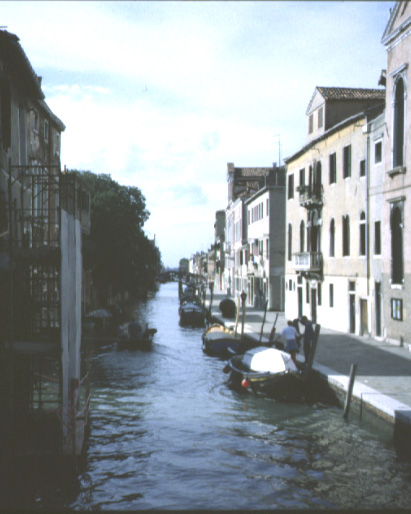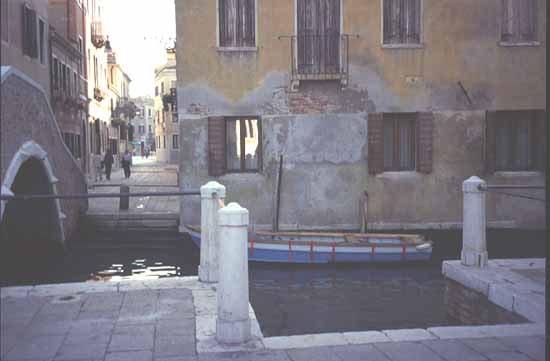
2. Fondamenta de l'Erbe and Rio della Panada, Castello
3. Rio della Toletta, Dorsoduro
4. Rio dei Miracoli meets Rio de San Canciano, Castello
5. Rio della Madonna dell'Orto, Cannaregio
6. Riva Bella and Ponte Ruga Bella o del Forner, Santa Croce

The defining feature of Venice is her canals--not just the Grand Canal, but all the smaller canals that circulate through the rest of the city. Whereas the main feature of the Grand Canal is display, the backwaters are narrow, not so display-oriented, and full of surprising views, none of which can be dignified by the name of "vista." |

|
1. Rio del Vin, Castello 2. Fondamenta de l'Erbe and Rio della Panada, Castello 3. Rio della Toletta, Dorsoduro 4. Rio dei Miracoli meets Rio de San Canciano, Castello 5. Rio della Madonna dell'Orto, Cannaregio 6. Riva Bella and Ponte Ruga Bella o del Forner, Santa Croce |
1. Rio del Vin
|
 |
|
 |
2. Fondamenta de l'Erbe and Rio della Panada Near the church of the Miracoli, we can see almost all of the elements of a backwater canal: narrow water, boats parked parallel, a small semi-private fondamenta running along the canal, and water stairs. All that's missing is a bridge, and that's because I was standing on it. |
|
|
3. Rio della Toletta
|

|
|

|
4. Rio dei Miracoli meets Rio de San Canciano |
|
|
5. Rio della Madonna dell'Orto
|
 |
|

|
6. Riva Bella and Ponte Ruga Bella o del Forner
|
|
